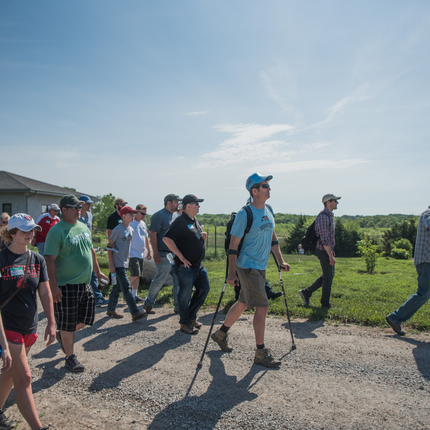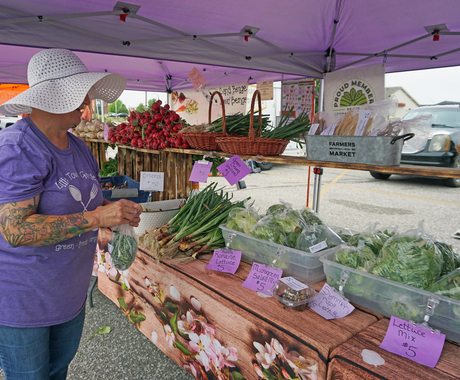By Cora Fox, former staff member
Every five years (or so), Congress passes legislation that shapes the day-to-day living of rural Americans. This legislation is a complex bundle of various programs and policies more commonly referred to as the farm bill. Key Congressional leaders in both the House and Senate influence the farm bill through work on their respective agriculture committees, which is a process that should not be taken lightly. With 12 titles covering everything from crop insurance to conservation, from beginning farmer education to small business support—and an $867 billion price tag—the farm bill impacts every single American.
The most recent farm bill, formally known as the Agriculture Improvement Act of 2018, was passed by Congress and signed into law by President Trump in December of last year. But simply enacting new legislation doesn’t mean Congress’ work is done. We now have to figure out how, and to what extent, these programs are funded.
The farm bill is unique in the sense that it not only provides authorization (creation, continuation, or changes) to policies, programs, and agencies, but can also directly fund those with mandatory dollars. As a result, some programs have the option to receive funding from two sources: mandatory funding through legislation (the farm bill) and discretionary funding through annual appropriations. But, this isn’t the case for all programs. Many programs are authorized to operate by the farm bill, but do not receive any mandatory funding. These programs rely on congressional appropriators to designate funds each year. Without discretionary dollars, these programs cease to function.
For fiscal year 2020 appropriations, the Center for Rural Affairs has identified nine policy priorities and programs that make a big difference in the lives of our supporters. The following policy priorities and programs not only help the Center accomplish our mission in strengthening rural communities, but also improve quality of life for farmers, small business owners, and rural residents.
- Rural Microentrepreneur Assistance Program (RMAP);
- Federal working lands conservation programs, including the Conservation Stewardship Program (CSP) and the Environmental Quality Incentives Program (EQIP);
- Conservation Technical Assistance (CTA);
- Farming Opportunity Training and Outreach (FOTO), which includes the Outreach and Assistance for Socially Disadvantaged and Veteran Farmers and Ranchers (Section 2501 program) and the Beginning Farmer and Rancher Development Program (BFRDP)
- Rural Business Development Grant (RBDG) program;
- Local Agriculture Market Program (LAMP), which includes the Value-Added Producer Grants (VAPG) program and the Farmers Market and Local Food Promotion Program (FMLFPP);
- Risk Management Education (RME);
- Community Food Projects (CFP); and
- Sustainable Agriculture Research and Education (SARE).
The first step in advocating for appropriated funding for these programs is to submit formal requests to the offices of congressional appropriators. Then, the appropriations committees decide which policies and programs they will choose to prioritize, and ultimately include them in their appropriations bills. These bills then must proceed through the standard legislative process of being voted on by the House and Senate and resolving differences in conference. Finally, the President can either sign the bill into law, or veto the bill.
If you’d like to learn more about our fiscal year 2020 appropriations requests, read our formal letter below.
Formal appropriations request
Dear House and Senate Appropriators,
The Center for Rural Affairs is a private non-profit organization, established in 1973 and based in Lyons, Nebraska. The Center works to promote social and economic justice, environmental stewardship and strengthen rural communities. A significant part of this work is engaging with people about the decisions that affect the future of their communities and the quality of their lives. Providing economic opportunities to new residents helps ensure that rural and agricultural communities will continue to thrive.
We appreciate the opportunity to submit to you our appropriations requests for fiscal year 2020. The following programs represent our appropriations interests:
- Rural Microentrepreneur Assistance Program (RMAP): $3 million in discretionary funds;
- Working Lands Conservation Programs: No changes in mandatory program spending for federal working lands conservation programs, to include the Conservation Stewardship Program and Environmental Quality Incentives Program;
- Conservation Technical Assistance (CTA): At least $790.9 million;
- Farming Opportunity Training and Outreach (FOTO) program: $10 million in discretionary funds, split equally between the Outreach and Assistance to Socially Disadvantaged and Veteran Farmers and Ranchers Program (Section 2501 program) and the Beginning Farmer and Rancher Development Program (BFRDP), and no changes in mandatory program spending;
- Rural Business Development Grant (RBDG) program: $35 million in discretionary funds;
- Local Agriculture Market Program (LAMP): $20 million in discretionary funds, split equally between the Value Added Producer Grants (VAPG) program and the Farmers Market and Local Food Promotion Program (FMLFPP), and no changes in mandatory spending;
- Risk Management Education (RME): No changes in mandatory spending;
- Community Food Projects (CFP): No changes in mandatory spending; and
- Sustainable Agriculture Research and Education (SARE): $45 million in discretionary funds.
These proposed funding levels would do a great deal to strengthen family farms and small businesses in our rural communities. The following pages include justifications for each of these proposals.
Thank you for your time and consideration.
Respectfully,
Cora Fox
Policy Associate
Center for Rural Affairs
Feature photo: The Center for Rural Affairs, alongside Legal Aid of Nebraska, hosted a Veteran Farmer Conference in 2018, which included farm tours. Funds from the USDA Beginning Farmer and Rancher Development Program, in part, provided the opportunity for the tour. | Photo by Kylie Kai



